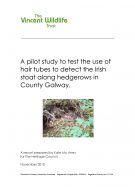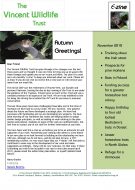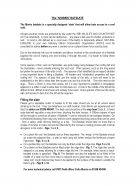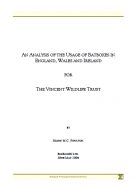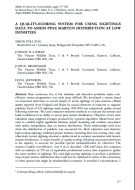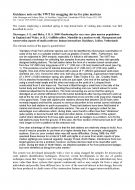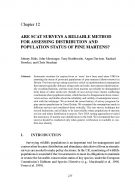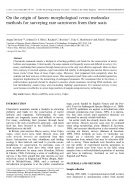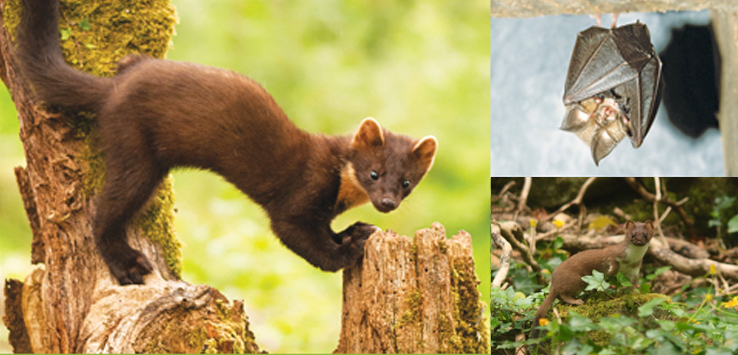Free Downloads
-
McAney K. (2010) A pilot study to test the use of hair tubes to detect the Irish stoat along hedgerows in County Galway
In Ireland the Irish stoat is considered to be a near-endemic subspecies, with >90% of the global population estimated to occur in the country. This study involved laying plastic baited hair tubes, 10 per 200 metres at 20m intervals, along hedgerows in the bottom left 1km2 of 10km grid squares across County Galway.
Download -
VWT E-newsletter Autumn 2010
The first of VWT’s six-monthly ‘e-zine’ to keep you informed about our work. This issue includes updates on tracking down the Irish stoat, our ‘Prospects for Pine Martens project, news from our dormouse team, and the bat work taking place in Poland, Wales and Dorset.
Download -
Morris, C. (2010) Cool Tower for lesser horseshoe bats
Lesser horseshoe bats, like all bats living in temperate regions, require a range of micro-environments in their summer roosts. The provision of cooler roosting areas for this species is an important consideration when developing mitigation plans or suggesting enhancements for existing roosts.
Download -
Fitting a Morris batslate
The Morris batslate is a specially designed ‘slate’ that will allow bats access to a roof void. Due to the relatively low cost of materials and labour involved in the construction of a Batslate it is easier to follow these instructions.
Download -
Poulton, S. (2006). An analysis of the usage of bat boxes
This analysis investigates the possibility that batboxes can be used to record the presence of bats in areas where they were previously unknown. The datasets used in this analysis have been derived from the VWT Batbox Database. This holds data from 52 sites collected over 20 years from England, Wales and Ireland.
Download -
Poulton, S. et al. (2006). A quality scoring system for pine marten sightings
Rare carnivores live at low densities and detection problems make cost-effective census programmes over wide areas difficult. We developed a system based on structured interviews to record details of ad hoc sightings of pine martens reported in England and Wales by casual observers in response to targeted publicity.
Download -
Birks, J. et al. (2005). Diversity of den sites used by pine martens
Dens are an important resource for pine martens and sites are selected in response to predation risks and energetic constraints. We compiled a sample of 370 pine marten dens to test the hypothesis that a scarcity of sites leads to the use of suboptimal structures.
Download -
Messenger, J. E. & Birks, J. (2000). Guidance note on a fur snagging system for pine martens
A guidance note on a system employing a stretched spring to trap dorsal hairs of pine martens which can then be subjected to DNA analysis. This advice note includes the construction, deployment and maintenance of this system used for collecting hair samples from pine martens as they visit specially designed baiting stations.
Download -
Birks, J. et al. (2004). Are scat surveys a reliable method for assessing distribution of pine martens?
Systematic searches for marten feces or ‘scats’ have been used since 1980 for assessing the status of protected populations of pine martens in Britain. This report reviews the recent history of survey programs for pine marten populations in Britain and examines the accuracy of marten scat identification in the field.
Download -
Davison, A. et al. (2002). On the origin of faeces: morphological versus molecular methods for surveying rare carnivores from their scats
Charismatic mammals remain a linchpin in attracting publicity and funds for the conservation of native habitats and organisms. Unfortunately, the same animals are frequently scarce and difficult to survey. For many, confirming their presence through faecal surveys is the only cost-effective approach.
Download


